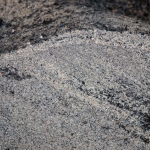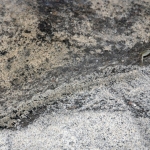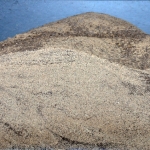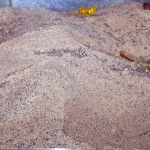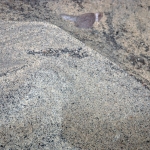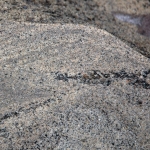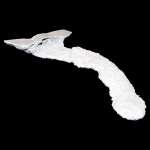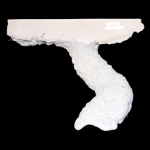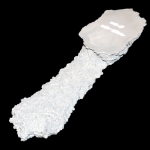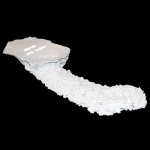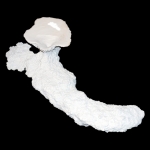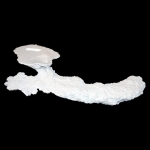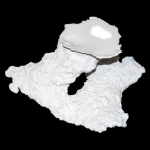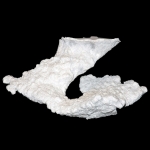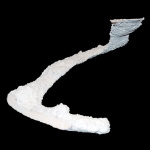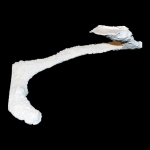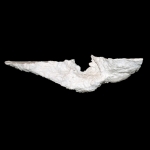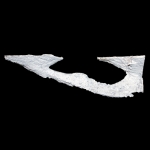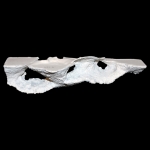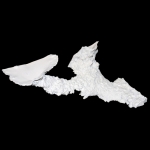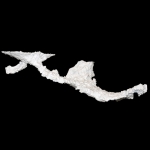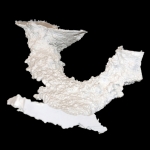Hadrurus arizonensis produces cross lamination structures in loose sediment and four distinct burrow architectures.
Cross lamination is produced as sediment particles are kicked out of the developing burrow producing mounds of layered sediment. Laminae are inclined 20-25 degrees within 2-5 cm thick mounds. Some laminated mounds are truncated and overlain by younger mounds as excavation progresses.
Open burrows are used as temporary shelters to permanent dwellings. Burrow elements vary in orientation from horizontal to oblique (0-50 degrees) and rarely vertical (75-90 degrees). The orientation varies along the length of the tunnels whereas chambers tend to be horizontal. The shafts and tunnels are elliptical in cross section with a flattened base, curved walls, and a concave roof. Tunnels and chambers have variable widths and heights along their length and may be straight to curved. Chambers are three to five times wider than high.
Each of the four burrow architectures has numerous variations and modifications. The burrows are often continuously modified by the scorpions and frequently progress from simple to more complex over the time of occupation. Mazeworks, for example, may be composed of multiple, interconnected subvertical ramps and U-shaped burrows.
Additional resources are available within the downloadable PDF and Excel files linked at the bottom of the page
Additional resources
Arizona Hairy Desert Scorpion Burrow Catalog (PDF)
Arizona Hairy Desert Scorpion Burrow Info Packet (PDF)
Arizona Hairy Desert Scorpion Burrow Data Spreadsheet (Microsoft Excel – Auto Download)
